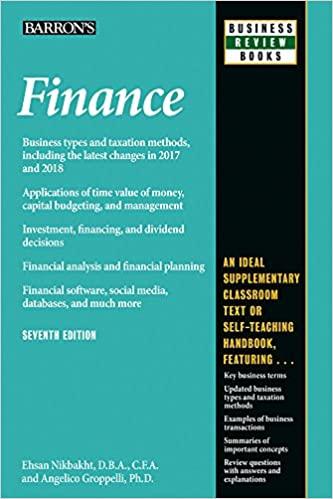Answered step by step
Verified Expert Solution
Question
1 Approved Answer
A high school graduate has to decide between working and going to college. If the person works, he or she will work for the next
A high school graduate has to decide between working and going to college. If the person works, he or she will work for the next 50 years. If the person goes to college, he or she will be in college for 5 years, and then work for 45 years. In this model, the rate of discount that equates the lifetime present value of not going to college and going to college is 6.851% when the cost of each year of college is $20,000, each year of non-college work pays $38,000, and each year of post-college work pays $62,000. For each of the parts below, discuss how the rate of discount that equalizes the two options would change and who would make a different schooling decision based on the change. (Hint: Use Excel to show that the rate of return to schooling is 6.851% in the above case, and solve for the rates of discount associated with each of the parts below. Calculating the rate of return for each case is straightforward in Excel by using the IRR function.) An Excel spreadsheet will be provided to students and reviewed in class before the homework is due.
(1) Each year of college still costs $20,000 and each year of post-college work still pays $62,000, but each year of non-college work now pays $35,000.
(2) Each year of college still costs $20,000 and each year of non-college work still pays $38,000, but each year of post-college work now pays $75,000. (Non-college work again pays $38,000.)
(3) Each year of non-college work and post-college work still pays $38,000 and $62,000 respectively, but now each year of college costs $25,000.
(4) Each year of college still costs $20,000. The first year of non-college work pays $38,000 but then increases by 4 percent each year thereafter. The first year of post-college work pays $62,000 but then increases by 6 percent each year thereafter.
In considering these alternative examples, be sure to discuss how the rate of discount that equalizes the two present discounted values changes, and who would make a different decision based on the change (that is, people who originally would not have gone to college deciding to go to college, or people who originally decided to go to college changing their mind and now deciding not to go to college).

Step by Step Solution
There are 3 Steps involved in it
Step: 1

Get Instant Access to Expert-Tailored Solutions
See step-by-step solutions with expert insights and AI powered tools for academic success
Step: 2

Step: 3

Ace Your Homework with AI
Get the answers you need in no time with our AI-driven, step-by-step assistance
Get Started


